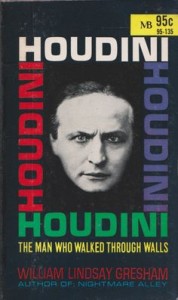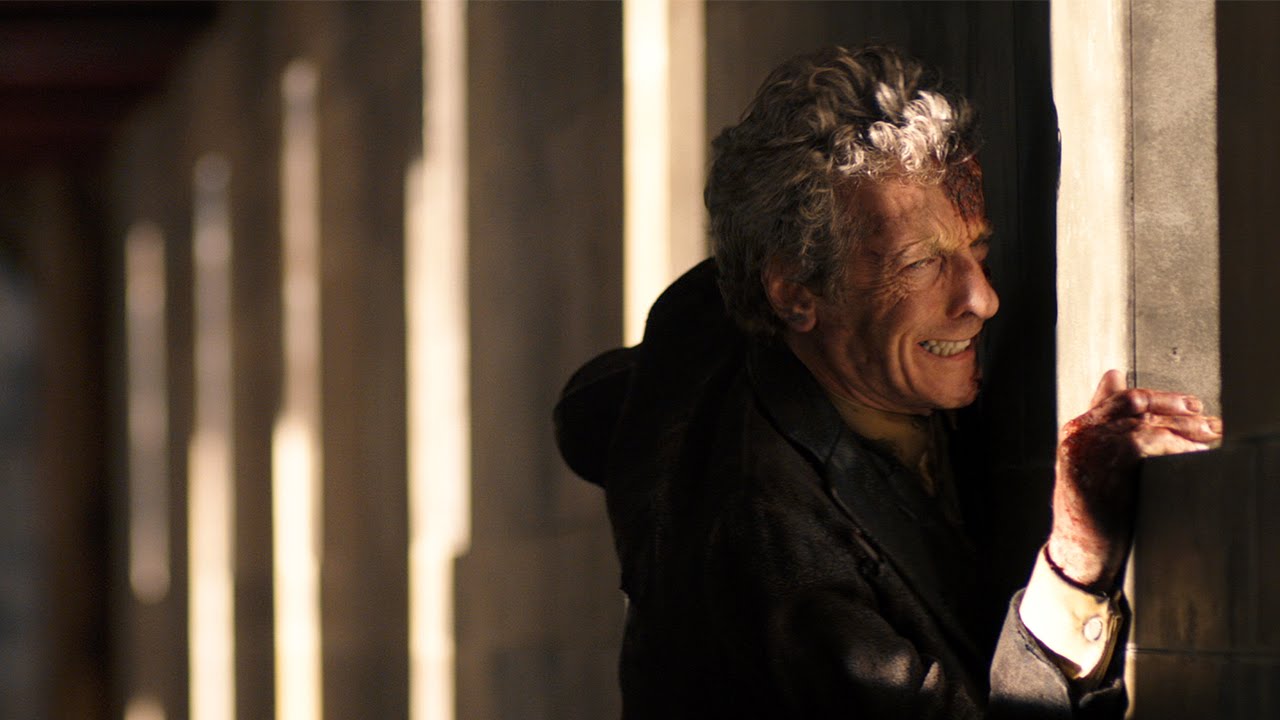“Heaven Sent” is an entertaining, experimental, and well constructed one-man show. Sometimes abstract metaphor tells a better story than literal expression.
Picking right up from “Face The Raven,” the Doctor continues his typically Moffat macho threats. This Kirk-like bragging, which started at the end of Matt Smith’s first episode “The Eleventh Hour,” is directly opposed to the show’s history. The Doctor brags about his intellect, not his CV. In addition to his cleverness, what makes the show unique is his reliance on luck, sloppy opposition and the bravery of his companions. In “Heaven Sent,” however, Steven Moffat adds nuance to his flawed interpretation. The Doctor’s opening rant is reminiscent of Will Munny scaring his unseen enemies at the end of Unforgiven. In both instances, the threats expose our protagonist’s weakness.
Compared to past incarnations, Twelve is way too emotionally dependent on Clara Oswald. Using her voice as beyond-the-grave counsel, however, is a stroke of genius. Moffat used the same device with the deceased Danny Pink talking to Clara in “Last Christmas.” In both instances, the “Fight Club Light” imaginary friend advances the plot while revealing something about the protagonist’s state of mind. These internal conversations might come from a need to stay connected to certain people long after they’re gone. We manipulate their words into what we think we need to hear at the time. At times of crisis or exhaustion, these old souls still get to me. I wish I could tell them when they were right, or wrong. We need to know they still care.
It’s also a terrific alternative to Peter Capaldi talking to us/himself for an hour. When Elisabeth Sladen (Sarah Jane Smith) left, Tom Baker said the Doctor didn’t need a companion. Not having a story like “Heaven Sent,” producer Philip Hinchcliffe placated him with The Deadly Assassin. After watching Tom talk to the camera, he gave the show Leela in the very next serial.
The Prisoner
The Doctor’s struggle is strikingly similar to Number Six’s escape attempts from the Village in The Prisoner (and Clint Eastwood in Escape from Alcatraz.) Ingenuity and past escapes are meaningless against this visually open prison. The trap is an elaborate, long-term interrogation from an unseen enemy. Lacking the desired information, the warden uses Franz Kafka torture techniques to get the confession. It’s Time Lord waterboarding.

Two-Fisted Time Lord
On first viewing, the visual of a bare hand punching through 20 feet of something “400 times harder than diamond” disabled my suspension of disbelief. Why didn’t the Doctor’s hand break? The second viewing changed my mind; his escape is a hybrid of physicality and psychology. He needed both to get out. Like water on stone, the Doctor became erosion.
Rather than explaining how this might be physically possible, I prefer to think the Azbantium barrier was a multi-dimensional image, similar to the program back doors in The Matrix Reloaded. That would explain how technology designed to trap an average Time Lord wouldn’t work on the most iron-willed Gallifreyan since Rassilon. It would also explain why his punching hand was bloody in prison, but fully healed on Gallifrey.
“How many seconds in eternity?” just adds noise to what’s already established with acting, plot and direction. Moffat wants the picture and a thousand words.
Most of “Heaven Sent” is the best one-set character exploration of the Doctor since William Hartnell-era’s “The Edge of Destruction.” Seeing him get roughed up is an added bonus for those who think the modern-era victories are a bit too neat and wholesome. American director Rachel Talalay (last season’s “Dark Water“/”Death in Heaven“) visualizes this bruised and bloody story with solid pacing, cinematography and wit.
Once that confession dial hit the dirt, however, this innovative character study turned into normal Doctor Who story: a cute kid in the desert for no reason, a domed city matte painting, and a vague Doctor threat. This, and Moffat bragging about The Doctor’s return to Gallifrey “getting a bit Clint Eastwood,” doesn’t bode well for next week’s season finale “Hell Bent.”
TARDIS Bits
I had my own confession dial to escape from this month; it’s called “work.” Shut up.
- How did Mayor Me get the confession dial to Gallifrey? Isn’t it still in that pocket universe from “Day of the Doctor?”
- Finding a second set of clothes by the fire is very much like 2001: A Space Odyssey.
- In last year’s “The Caretaker,” Clara followed her own “I can’t keep doing this” moment with “Yes, I can, I can do it, of course I can do it. I’ve got it all under control.”
- The garden looks like the TARDIS Cloister room in Logopolis,” the last serial with Tom Baker as the Doctor. Entropy and decay were that season’s major themes.
- The Veil’s flies reminded me of John Waters’ Serial Mom.
- Why didn’t he use the shovel against the diamond wall? And why did he only use one fist?
- “Bird” meant something completely different to me; Clint Eastwood and I would have tried to find Charlie Parker.
- The confession dial is wickedly powerful. Only a Time Lord device could interrogate with your own memories.
- How could the Time Lords, designers of confession dial, not realize he’d “take forever to die?”
